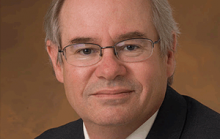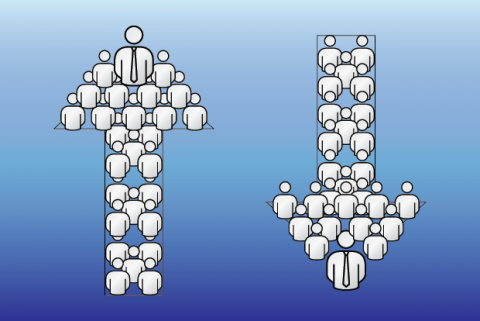At NASA's Jet Propulsion Laboratory, IT Chief Technology Officer Tom Soderstrom's mission is to identify and infuse new IT technologies into JPL's environment. In this interview, Soderstrom explains why he believes IT leaders should be proactive about delivering an excellent customer experience to their users or risk seeing them turn to other sources for their needs. He shares a simple, but important tip that could help any IT department put customer experience first. And Soderstrom addresses what IT organizations should consider doing if they're ever faced with making a trade-off between cost and the customer experience.
The Enterprisers Project (TEP): What for you defines a superior customer experience?

Tom Soderstrom: People tend to focus on the user experience of one application or one program or one user interface. What they forget is that they need to think of customer experience as the entire experience. Let’s say that the experience for a particular application is absolutely fantastic, but the user has to log in using a 15-character password on their mobile device to be able to access it. Then it doesn’t matter that the experience they get to is great.
TEP: How are you making customer experience a priority at JPL?
Tom Soderstrom: Customer experience is arguably the most important thing here. In fact, we’re looking at a new designation called Experience Readiness Level, or ERL, which is an extension of something we and NASA and the DOD already do, called Technology Readiness Level, or TRL.
TEP: What would ERL look like in practice?
Tom Soderstrom: ERL would mirror technology readiness, but more in setting expectations. So if something had an Experience Readiness Level of nine, we would know that anybody could use it without reading instructions. Done. If it had an ERL of six, that would tell us that an early adopter could easily understand it, but a very senior-level person who doesn’t have time to tinker with new things shouldn’t touch it. This sort of designation can set the expectations of developers as well. So if we’re building a mandatory training module for all our 5,000-plus employees, it clearly needs to have ERL of nine.
TEP: What kinds of changes could help any IT department put customer experience first?
Tom Soderstrom: A simple but important one is to create a user advocate for every project. This advocate would look at the entire experience, not just a particular piece of software. If we don’t think through the customer experience we could really complicate things because of all the security issues, the working remotely issues, or all the different devices on which you could have the experience. The fallback used to be to make it so secure and so buttoned-up that you had to go into the office to use it, because that’s easier for IT. But that doesn’t work anymore. IT has to remember that people have many choices and they will do whatever is easiest.
TEP: Your level of focus on customer experience is interesting, given that you’re a government agency and they traditionally have not been focused there.
Tom Soderstrom: Even though we’re a .gov, we need to pay attention to our end users because they are IT consumers. They may be out there having a better customer experience using software, so therefore they will bring that into our environment. We need to learn from that and be proactive. We’re doing a lot of prototypes now where by far the most important answer to the prototype is what the end-user experience is like. If we go build it, is this something they will use? And if it isn’t, then we don’t bother doing it.
In that vein, we need to focus on simplifying as our environments become more and more complicated. It’s really up to IT on that score. And that simplification is in the eye of the user. It’s not one size fits all.
TEP: Can simplifying the customer experience help you differentiate better in a world of increasing commoditization and sameness?
Tom Soderstrom: That’s a good point. If you deliver a very good customer experience, which is determined in the eyes of the customer, they will want to partner with you and do more things. So if you have to make a trade-off between cost and the customer experience, I would err or on the side of customer experience. That doesn’t mean that you build expensive things. It means you focus on using prototypes and user advocates to get that experience right.
ALSO READ
- How IT is reshaping customer experience at the point of need
- CIOs: Deep customer relationships are a must to stay competitive
Tom Soderstrom serves as the IT Chief Technology Officer at NASA's Jet Propulsion Laboratory, where his mission is to identify and infuse new IT technologies into JPL's environment. He has led remote teams and large scale IT best practices development and change efforts in both small startup and large commercial companies, in international venues, and in the US Government arena. Some of the companies he has worked for include Telos, enterWorks, User Technology Associates, Digital Island, Exodus, Cable & Wireless, and Raytheon.




